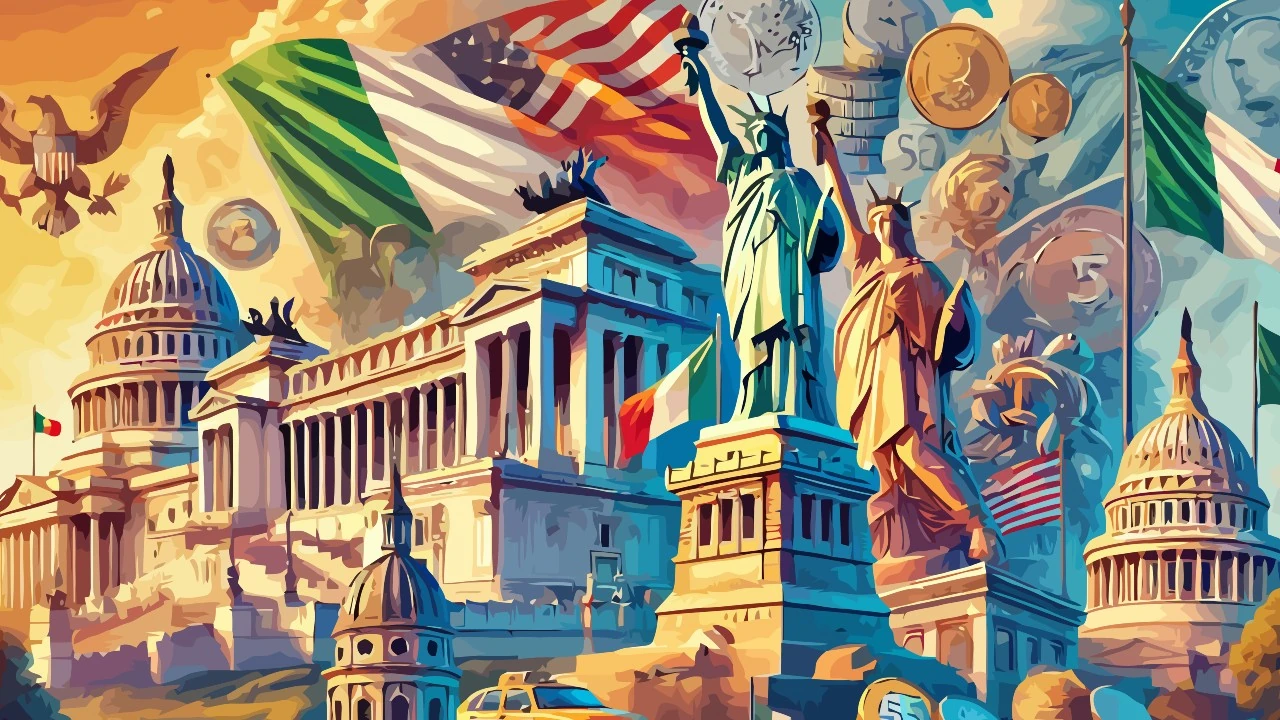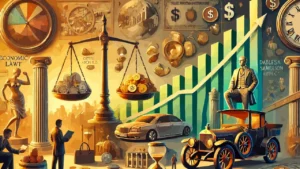The evolution of monetary systems has followed different paths in different countries, but a recurring theme is the transition from a decentralized to a centralized model of issuance. This article explores the historical period in which banks issued money autonomously, analyzing the cases of the United States of America and the Kingdom of Italy, and describes the process of transition to a single central bank. We will delve into the reasons that drove this change and the advantages and disadvantages that resulted from it.
I decided to take as a reference the monetary emission in the United States of America because I consider it the most historically significant for the subsequent evolution of the economy in America and the balance of power throughout the world. I could have also mentioned the Bank of England which however was not born as a merger of several banks and has a slightly different history from the American central bank.
#1. Monetary issuance in the USA
During the 19th century, the United States went through a period of great fragmentation in the issuance of money. Each private and state bank could issue its own banknotes, generating a vast array of currencies in circulation with different values, appearances, and credibility. This period, known as the “Free Banking Era” (1837-1863), was marked by extreme economic freedom but also by great financial tensions.
Banks issued banknotes backed primarily by gold or silver reserves, but the quality and quantity of these collaterals varied greatly from one institution to another. As a result, not all banknotes had the same face value, even if they bore the same figure. Some banks were better able to back their currency with solid reserves, while others relied on less reliable resources or none at all.
The consequence was a constant risk of devaluation and loss of value for those who owned these banknotes. In addition, the circulation of counterfeit currency further complicated the situation. Some merchants refused to accept banknotes from lesser-known or unreliable banks, creating a fragmented and unpredictable market.
Another problem arose when banks failed: the banknotes they issued immediately lost value, leaving their holders with pieces of paper with no purchasing power. The lack of a central authority to guarantee the value of the banknotes made any transaction potentially risky and negatively affected public confidence in the monetary system.
The difficulties were not limited to the value of the currency. The appearance of the banknotes varied enormously, with different colors, sizes, and symbols, which increased the risk of counterfeiting and made it difficult for the public to quickly recognize the authenticity of the money. In this context, the variety of issues was as much a sign of economic freedom as it was a source of confusion and vulnerability.
Monetary fragmentation was a serious obstacle to interstate trade. A Midwestern merchant might refuse a note from the East Coast, fearing a lack of coverage or the eventual insolvency of the issuing bank. This made trade between distant regions extremely complex and penalized the national economy, limiting the integration of markets.
While some of the more established banks maintained positive reputations and relatively wide circulation of their notes, their influence remained confined to certain geographic areas. For example, a note issued by a New York bank might be accepted without issue within the state, but be nearly worthless in states such as Ohio or Kentucky.
Over the years, growing popular discontent and economic instability led the federal government to consider the idea of monetary reform. Recurring banking crises and the absence of a single national currency were destabilizing factors, which pushed for the adoption of a more uniform and centralized system.
Does anyone remember the episode The Inheritance from Little House on the Prairie where Charles Ingalls receives from a rich deceased uncle a large amount of banknotes that later turn out to be Confederate and now worthless? Well, that’s a clear example of what I just wrote.
This picture of precariousness and fragmentation stimulated the political debate on the adoption of a single central bank, capable of guaranteeing a stable and uniform currency throughout the national territory. The chaos of the Free Banking Era (period without banking regulation) would eventually culminate in the creation of the Federal Reserve in 1913, which would inaugurate a new course for the US financial system, putting an end to an era of uncertainty and heterogeneity.
#2. Monetary unification in the USA
The instability and monetary fragmentation of the Free Banking Era led to a growing awareness of the need for radical reform of the U.S. financial system. The proliferation of banking crises, caused by the ease with which local banks failed, leaving a trail of worthless banknotes in their wake, fueled popular discontent and distrust of money. Furthermore, the heterogeneity of currencies impeded interstate trade, slowing economic growth and limiting the mobility of capital.
Public opinion and politicians began to clamor for a solution that could guarantee stability and monetary uniformity. The banking crises of the 1870s and 1890s, culminating in the Panic of 1907, pushed the federal government to intervene more decisively. It was precisely this last crisis that dramatically highlighted the absence of a central authority capable of managing liquidity and guaranteeing the stability of the banking system.
After years of debate and failed attempts at reform, in 1913 the United States Congress passed the Federal Reserve Act, establishing the Federal Reserve System. This new central bank was conceived as a hybrid institution, composed of twelve regional banks under the supervision of a central board in Washington D.C. The purpose was to ensure a balanced distribution of power among the different economic regions of the country, avoiding excessive concentration of financial authority.
The Federal Reserve acquired the exclusive power to issue the national currency, replacing the multiple local currencies with a single federal currency. The United States dollar, issued directly by the Federal Reserve, became the sole legal tender for all commercial and financial transactions in the national territory. This process of centralization marked the end of the era of private banknotes and represented a sea change in American economic history.
The new system had many advantages, including financial stability and centralized control of the money supply. The Federal Reserve could intervene quickly to inject liquidity into the system in the event of a crisis, preventing the collapse of local banks and ensuring greater investor confidence. Furthermore, monetary uniformity favored interstate trade, reducing the risks associated with the circulation of different currencies.
However, the creation of the Federal Reserve was not without criticism and controversy. Some saw the centralization of monetary power as a risk to the economic autonomy of individual regions, fearing that a unified monetary policy would not take into account local needs. In addition, some sectors of public opinion accused the Federal Reserve of representing the interests of large banks rather than those of ordinary citizens.
Among the first tasks of the Federal Reserve were to establish a uniform discount rate and to ensure the supply of liquidity to distressed commercial banks. By managing interest rates and controlling bank reserves, the central bank became the primary instrument for regulating the national economy.
Despite initial difficulties and inevitable resistance to change, the Federal Reserve gradually succeeded in consolidating its role as a guarantor of financial stability. The centralization of the monetary system proved essential to sustaining the economic expansion of the United States in the twentieth century, although it did not completely solve the problem of banking crises.
By introducing more nuanced monetary policies and accumulating gold reserves to back the currency, the Federal Reserve helped build widespread confidence in the stability of the dollar. The ability to intervene promptly during crises prevented a repeat of banking panics like the one in 1907, gradually consolidating the reputation of the new institution.
The creation of the Federal Reserve marked the end of the era of private banks as currency issuers and the beginning of a phase of modernization of the American financial system. However, debates on the appropriateness and effectiveness of monetary centralization continue to this day, demonstrating how the question of the balance between regional autonomy and centralization has remained a controversial issue.






Leave a Reply